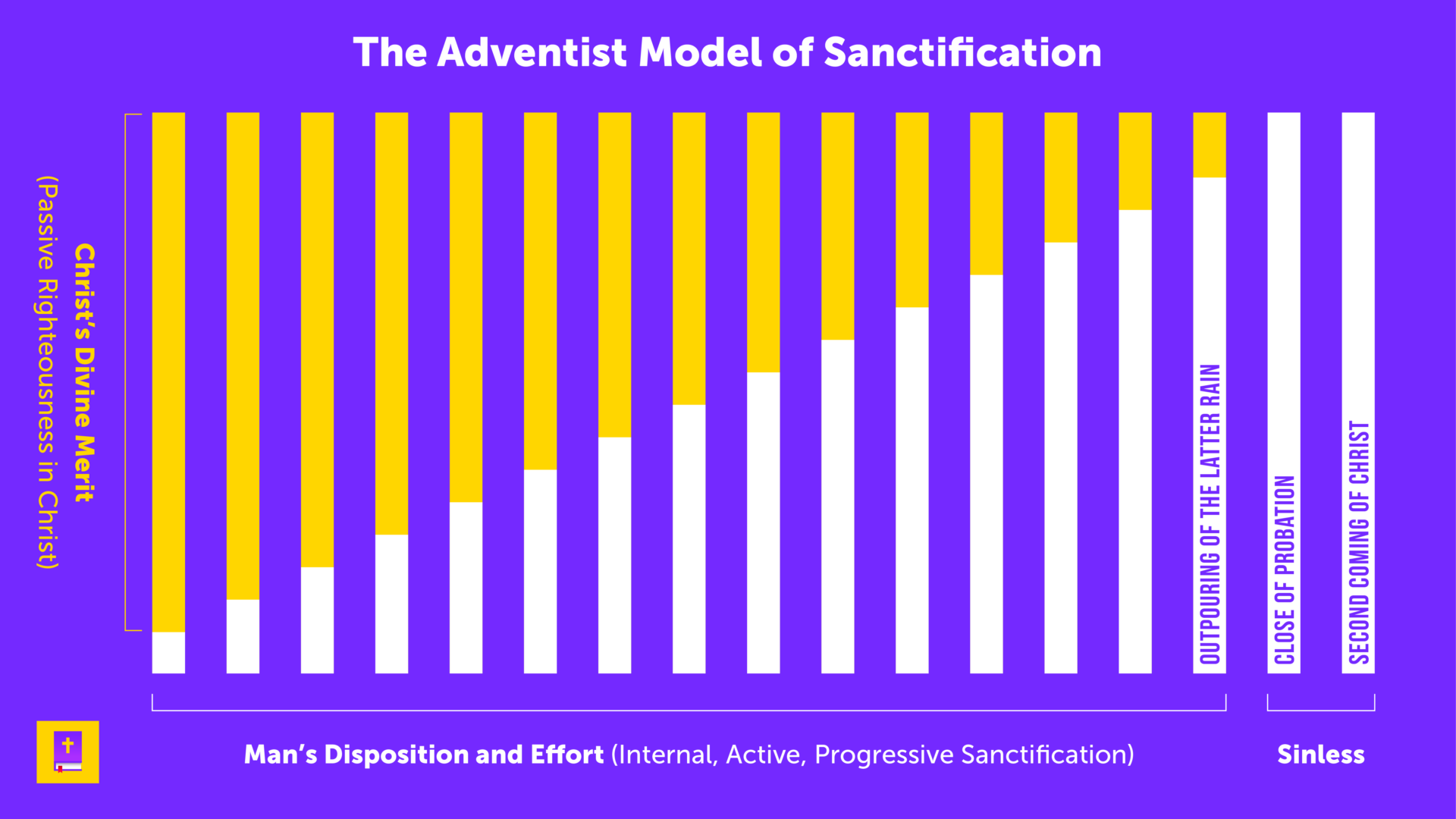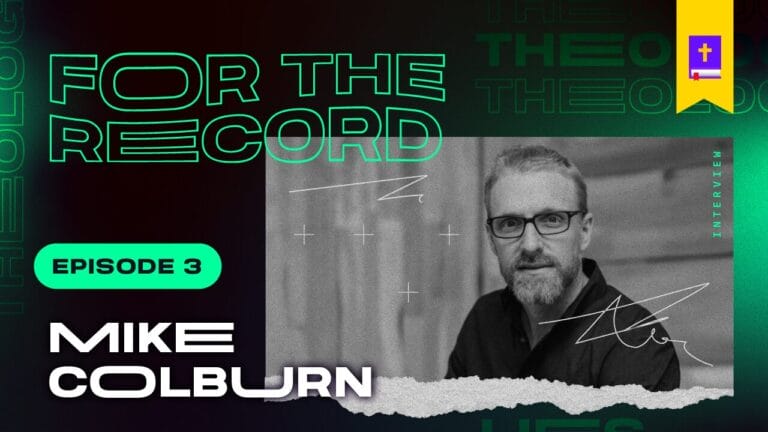One of the fatal flaws to the Seventh-Day Adventist system of theology is their truncated view of sin. It is this view that allows for things such as sinless perfectionism to be seen by Adventists as something attainable and those who disagree, must be in favor of rebellion and disobedience to God. How sin is defined then is a serious fork in the road and a key issue.
The Adventist Church narrowly defines sin by a single verse of scripture—1 John 3:4. That is the end of the road because that’s where Ellen G. White, who they believe was divinely inspired and corrects inaccurate interpretations of scripture, drew the line. Sin in Adventism is defined are merely disobedience to the letter of the 10 Commandments. It’s strictly behavioral.
This is a very truncated understanding of sin when looked at in totality. We are also told that when someone knows the right thing to do and doesn’t do it, to that person it is sin (James 4:17). James also explains that sin starts internally when one is tempted and the evil desires within a person are enticed which gives birth to sin (James 1:13-5). This shows that there is an innate evil within humanity that is lurking and can be enticed.
Paul tells us that anything not done of faith is sin (Romans 14:23). This would include going against one’s conscience on a matter. The sin may not be located in what one does but in the fact that they commit an act they believe to be evil, violating their conscience. This shows us that sin is deeper than merely the letter of the 10 Commandments. Some sins can be subjective regarding one person’s conscience convicting them and another person’s not.
Jesus expounds upon the Law in Matthew 5-7 where He explains the spirit of the Law in contrast to the mere letter. When talking about adultery, He said “you have heard that it was said, ‘You shall not commit adultery,’ but I say to you that everyone who looks at a woman with lustful intent has already committed adultery with her in his heart” (Matthew 5:27-8). His Jewish audience, who was given the Law, had heard the letter of the seventh commandment, but it is nowhere stated in the letter of that command that looking upon someone with lust is the equivalent of committing adultery.
He does the same thing with the sixth commandment, thou shalt not murder, by explaining that having hatred in one’s heart toward their brother is the equivalent of murder, despite not committing the physical act (Matthew 5:21-2). Nowhere does the letter of the 10 Commandments say hatred in one’s heart is murder. This is Jesus expounding upon the letter of the Law and showing that the spirit behind the command runs much deeper than mere external obedience, but the heart. It is what comes out of one’s heart that truly defiles them (Matthew 15:19-20, Mark 7:21-3).
Jesus stated that the entirety of the Law hangs upon love for God and love for neighbor (Matthew 22:36-40). Again, showing that there is something that transcends the letter of the 10 Commandments which is the heart of the matter (no pun intended). The letter of the Law does not say to “love your neighbor as yourself,” yet Jesus said it is the second greatest commandment. This is because the spirit behind the 10 Commandments is ultimately love for God (the first four commandments) and love for one’s neighbor (the remaining 6).
When showing what the true standard is, Jesus goes far beyond simply the letter of the 10 Commandments by saying it is loving God perfectly with every thought, word, deed and motive (Deuteronomy 6:4-7, Mark 12:30, Luke 10:27). That means that 24/7, 365 a person is to be loving God with everything in their being. That’s how high the standard is. Any honest person sees how high that standard is and how far they fall short. Even despite being a follower of Jesus.
Many in our day equate sin with simply making mistakes or poor choices. While this is true to a degree, it discounts the severity of the action. The decision to sin is indeed a poor one, but once again, it is more than a mistake. It is an act of moral transgression. When we look at how Scriptures describe sin, we see three primary ways:
1. Sin is a debt
Scripture describes sinners as debtors who cannot pay their debts. In this case it isn’t a financial indebtedness but a moral indebtedness. Jesus equates sin with legal, moral debt in the Lord’s Prayer (Matthew 6:9-13, Luke 11:1-4). When one fails to meet the standard put forth by Christ, loving God perfectly, they become indebted to Him as creator.
The Lord’s Prayer also gives us insight into the posture that the follower of Christ is to take, recognizing that they fall short, and are to humble themselves before God—part of which includes asking forgiveness for one’s sins. Jesus instructs us to pray this prayer daily showing that this is the posture believers are to daily take, recognizing how far they fall short despite being a follower of Jesus.
2. Sin is an expression of enmity
This is why sin is not restricted to merely an external action that transgresses the Law. Rather, it represents an internal motive that is driven by an inherent hostility toward God. The biblical description of human fallenness includes the charge that we are by nature enemies of God who are born “dead in our trespasses and sins” (Romans 3:9-11, Ephesians 2:1-4). In our enmity toward Him, we do not want to have Him even in our thinking, and this attitude is one of hostility toward the fact that God commands us to obey His will. This is why an understanding of reconciliation to God is so fundamental to the Christian faith. One of the necessary conditions for reconciliation is that there has to be enmity that is then remedied. Jesus Christ overcomes this enmity in His redeeming work as the believers Mediator (1 Timothy 2:5, Hebrews 7:25).
3. Sin is a crime
This is where transgression of God’s Law comes into play—the only category the SDA Church wants to recognize. Sin is any want of conformity to, or transgression of, the law of God. This entails both active and passive disobedience—what could be called sins of commission (doing something you should not) and sins of omission (not doing something you should). When we fail to do what God requires, there is a lack of conformity on our part to be in accordance with His will—actively doing what God prohibits. Thus, sin is a transgression against God’s Law.
The Adventist Church’s truncated, narrow view of sin is one of the major problems fueling their entire system of theology which is built around the Law of God and sinless perfection. It is this truncated view that has left many Adventist’s deceived into thinking they actually live a life completely free from sin (1 John 1:8), thinking they are demonstrating to God that they can be trusted to be let into Heaven.
Because sin is seen as only a character flaw and not a condition, they see behavior modification as the end all, be all for being a perfectly righteous person. And with the help of God, a person can get to that state and condition without any radical change to their natures. Which is why Ellen G. White taught that, at the Second Coming, no change of character or nature will happen to an individual. That’s what probation is for currently—to get oneself to a sinlessly perfect state so they are fit for heaven. Once probation closes, that opportunity is not there anymore and you will be lost.

This narrowly defined view of sin is what has allowed for such an erroneous understanding to permeate Seventh-Day Adventist theology.
Man is born dead in sins and trespasses, by nature a child of wrath (Ephesians 2:1-4). He needs far more than simple behavior modification. He needs a change in his nature. This is why the new birth is so important to understand (John 3:3, Titus 3:5). When God regenerates a person, they begin having new desires that were foreign to their fallen condition. They begin feeling conviction over sin. This awareness then grows over time as a person begins seeing how Holy God is and how far they fall short. The war with sin begins and a person fights that fight to their last breath. This is what Paul explains in Romans 7:14-25. Until the resurrection and the body is glorified, which will ultimately purge and cleanse man’s fallen condition, believers will war with sin. It is the evil that lurks within a person that James talks about (James 1:14-5) that will finally be put to death to no longer make itself seen.










